La Festividad del Señor de Qoyllur Rit’i (en quechua: “Estrella de Nieve”) es una de las celebraciones religiosas más importantes del Cusco, reconocida por su mezcla de espiritualidad católica y cosmovisión andina. Se realiza anualmente en el distrito de Ocongate, provincia de Quispicanchi, en la región de Cusco, a más de 4,600 m s.n.m., al pie del nevado Sinakara.
Esta peregrinación se realiza 40 días después del Domingo de Resurrección, generalmente a fines de mayo o principios de junio, coincidiendo con la festividad del Corpus Christi.
Más de 60,000 peregrinos acuden cada año desde diversas regiones del país y del extranjero, muchos caminando durante días, para llegar al santuario del Señor de Qoyllur Rit’i.
Para esta peregrinación se hacen presente 8 “naciones” que son: Paucartambo, Quispicanchi, Canchis, Acomayo, Paruro, Tawantinsuyo, Anta, Urubamba. Estas representan las distintas comunidades y provincias de la región cusqueña que participen en la peregrinación.
En 2011, la UNESCO declaró esta celebración como Patrimonio Cultural Inmaterial de la Humanidad, por su riqueza simbólica, su profundidad espiritual y su papel en la preservación de las tradiciones andinas.
Se realiza entre fines de mayo y principios de junio, 40 días después del Domingo de Resurrección, coincidiendo con el Corpus Christi. La celebración dura cerca de una semana, aunque muchos peregrinos llegan antes para aclimatarse o preparar danzas y ofrendas. Los peregrinos se organizan en “naciones”: delegaciones según su procedencia.
Estas naciones son: Paucartambo, Quispicanchi, Canchis, Acomayo, Paruro, Tawantinsuyo, Anta, Urubamba, cada nación tiene danzarines, músicos, y “alferados”.
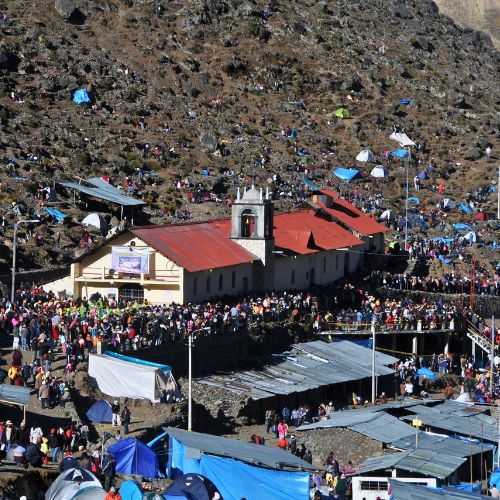
Qoyllority ( o Qoyllor Riti) en quechua significa “estrella de nieve” o “nieve brillante”.
El nombre se refiere a la imagen de Cristo en la roca, que se ve resplandeciente sobre la nieve. Para los peregrinos, la imagen de Cristo en la nieve representa una conexión entre lo celestial y lo terrenal, así como la fuerza y la protección de la montaña.
Según la tradición oral, un joven pastor indígena llamado Mariano Mayta se encontraba cuidando su ganado cerca del nevado. Un día conoció a un niño misterioso, vestido elegantemente, llamado Manuel, quien le ofrecía comida, compartía juegos y conocimientos. Mariano se sintió reconfortado por su compañía y lo consideró su amigo celestial.
Un sacerdote del pueblo, intrigado por las historias de Mariano, fue a buscar al niño Manuel. Al llegar al lugar, encontró que el niño había desaparecido, y en su lugar, sobre una gran roca, había quedado impresa la imagen de Cristo crucificado, grabada milagrosamente en la piedra. Se dice que Mariano murió poco después, al enterarse de que su amigo no era humano, sino una manifestación divina.
La roca con la imagen de Cristo se convirtió desde entonces en un lugar sagrado. Sobre ella se construyó el actual Santuario del Señor de Qoyllur Rit’i, que aún hoy es venerado por miles de fieles.
A lo largo de los siglos, el culto al Señor de Qoyllur Rit’i se ha consolidado como una de las más profundas expresiones de sincretismo religioso en los Andes. Para los pueblos quechuas, la imagen representa no solo a Cristo, sino también al Apu protector, al espíritu de la montaña, y a la conexión entre el hombre y la naturaleza.
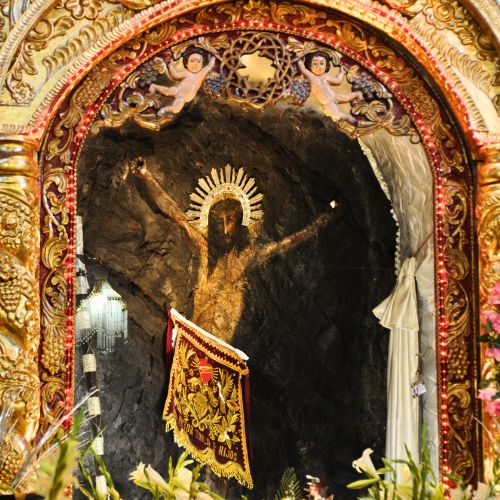
Miles de peregrinos, provenientes de distintas regiones del país, caminan hacia el santuario del Señor de Qoyllur Rit’i, ubicado en las faldas del nevado Sinakara, en el distrito de Ocongate, provincia de Quispicanchi, Cusco, a más de 4,600 metros sobre el nivel del mar.
La peregrinación comienza en el poblado de Mahuayani, desde donde se recorren a pie aproximadamente 8 kilómetros por caminos de montaña. Durante la caminata, los peregrinos elevan oraciones, cantos y ofrendas, mientras avanzan en grupo junto a sus respectivas “naciones” o comunidades. La ruta es exigente por la altitud y el clima frío, pero representa una muestra de resistencia y devoción.
Esta celebración es una mezcla de religiosidad católica e identidad andina. El Señor de Qoyllur Rit’i representa tanto al Cristo crucificado como a los apus o espíritus de las montañas, lo que convierte a la peregrinación en un acto de fe y también de conexión con la naturaleza. Uno de los momentos más simbólicos es la participación de los ukukus, personajes míticos con trajes oscuros y máscaras, quienes suben al nevado en la madrugada para recoger hielo sagrado, considerado purificador por las comunidades.
La peregrinación al Señor de Qoyllur Rit’i no solo es un acto religioso, sino también una afirmación de identidad cultural, un encuentro comunitario y un testimonio vivo del sincretismo andino. En 2011 fue reconocida por la UNESCO como Patrimonio Cultural Inmaterial de la Humanidad por su profundo valor espiritual y su importancia en la preservación de las tradiciones andinas.

La festividad del Señor de Qoyllority se da a cabo al pie del monte Colquepunco en el nevado de Ausangate, distrito de Ocongate, provincia Quispicanchi.
La peregrinación empieza desde la comunidad de Mahuayani hacia el santuario donde se encuentra la piedra con la imagen de Jesús Crucificado, la Capilla de la Virgen de Fátima, Unupata que es el agua sagrada, las apachetas, y Pukllanapata que es el área de juego sagrado.

Durante la peregrinación al Señor de Qoyllur Rit’i, las danzas ocupan un lugar central. No son solo actos artísticos o festivos: son formas de comunicación con lo divino, y símbolos de identidad cultural de cada “nación” o delegación que participa en esta celebración. Cada danza tiene su propio significado, vestimenta, música y función ritual, y se presenta con profundo respeto y compromiso.
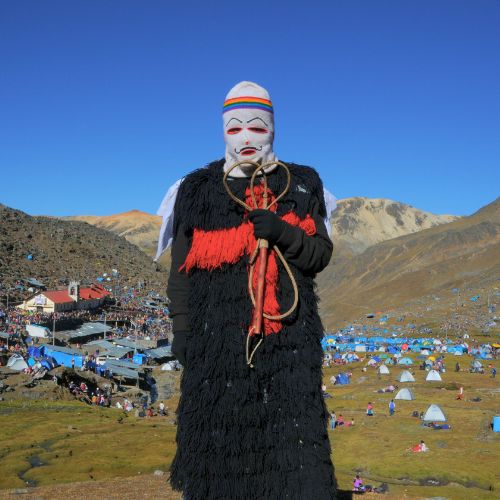

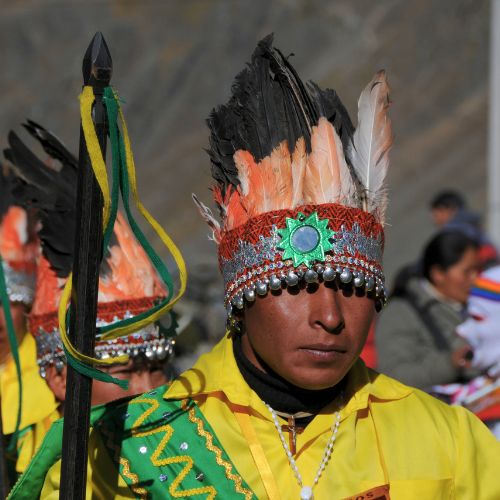
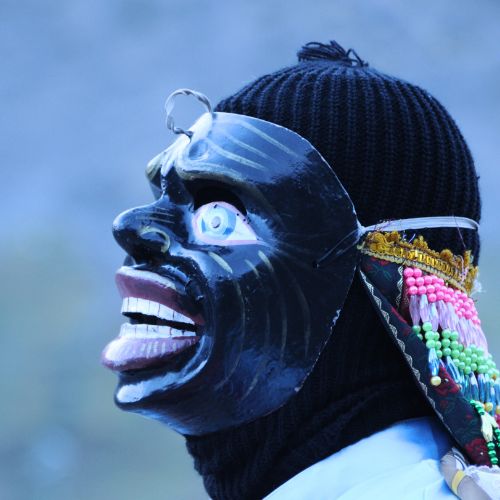
Each region has its own way of celebrating Holy Week, mixing religious traditions with festivals full of color, music, and food; from the departments of Ayacucho, Cusco, Puno, Arequipa, etc. These regions have a unique way of holding processions of different saints, accompanied by a crowd of pilgrims.
Ayacucho stands out during Holy Week in Peru, with celebrations that combine religious fervor and deep cultural traditions.
Ayacucho is known for its emotional Holy Week, with festivities starting on Palm Sunday and continuing with daily processions, featuring flower carpets and religious chants; on Good Friday, the "Steps" procession is a key event, with thousands of devotees walking through the city streets.
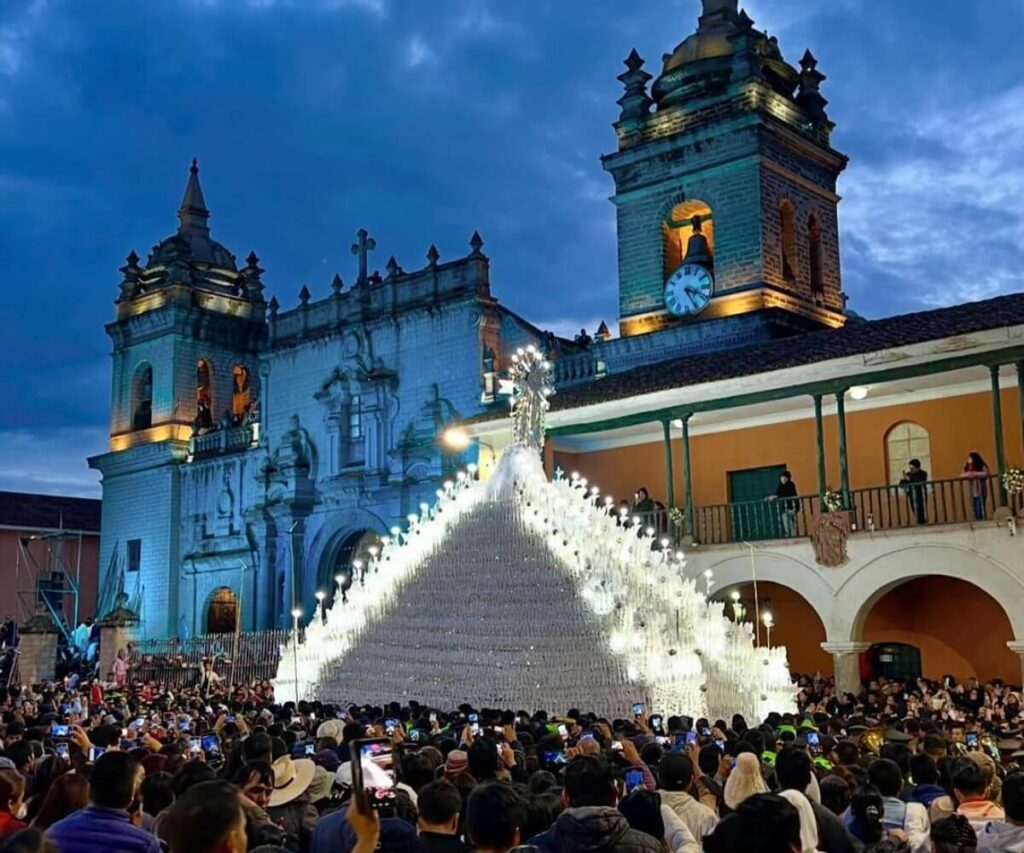
During Holy Week in Ayacucho, you can explore the markets where you will find altars and local textiles, and you can also visit artisan workshops to see traditional art and take home a unique souvenir from the city.
Getting to Ayacucho is easy, with direct flights from Lima that take about an hour; there are also buses, which are a more economical option but take around 10 hours. Once in the city, you can explore on foot or by car.
Cusco offers a unique experience during Holy Week, where religious traditions blend with Inca heritage and the beauty of the Andes.
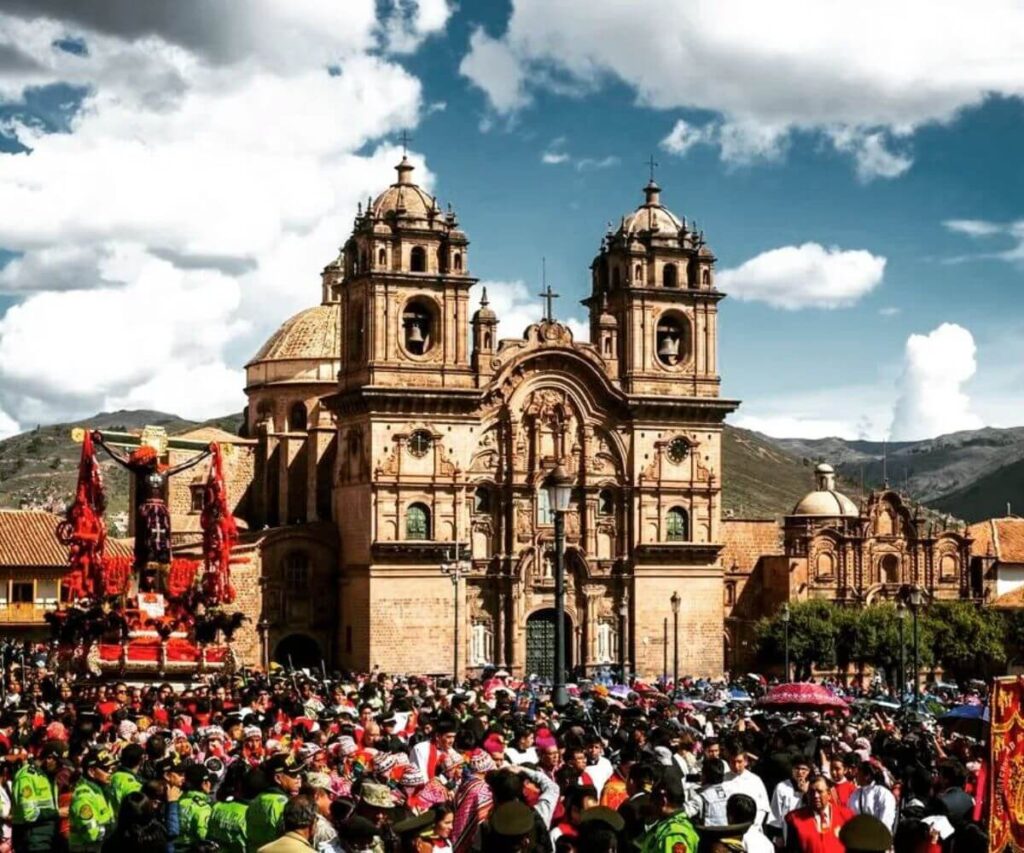
In Cusco, Holy Week blends Catholic and indigenous traditions, with the main event being the procession of the "Lord of the Earthquakes", where an image of Christ is paraded, believed to protect against earthquakes and adorned with red ñucchu flowers, symbolizing His blood.
During this week, it's recommended to visit archaeological sites and enjoy the local cuisine. Markets offer typical dishes and sweets such as maicillos, suspiros, and condesas.
Cusco has daily flights from Lima and other major cities in Peru, making access to the city easy; you can also travel by bus from nearby locations, although the roads are often winding.
Cajamarca offers a vibrant Holy Week, full of unique traditions and festivities; its celebrations combine the faith of the locals.
In Cajamarca, Holy Week is celebrated with the creation of flower carpets for the procession of the Holy Sepulcher. The locals experience these dates with great devotion, accompanied by traditional music and dances.
Explore the town and its surroundings, where you can learn about pre-Inca fortresses and enjoy thermal baths. Also, don't forget to try manjar blanco, a popular traditional dessert.
You can reach Cajamarca by air from Lima or by road, although the road trip is quite long but offers stunning landscapes.
Known as the White City, Arequipa offers a Holy Week full of religious fervor and architectural beauty.

Arequipa celebrates Holy Week with great fervor, highlighting vigils and masses in its cathedrals. The Good Friday procession takes place in the Misti and Chachani volcanoes, offering a very unique setting and a moving experience.
Tour the historic convents and enjoy its colonial architecture, and don't miss its delicious cuisine, such as rocoto relleno and ocopa arequipeña.
Arequipa has good air and land connections. Its airport receives direct flights from Lima and other major cities in the country.
The capital of Peru offers a week full of religious traditions and cultural activities. During this time, the city is filled with processions, liturgical events, and festivals that stand out.
Lima experiences an urban Holy Week but full of spirituality. The historical churches in the city center, such as the Lima Cathedral and San Francisco, are the main venues for the celebrations.
During your visit, don't forget to explore Lima's museums and galleries, and enjoy the gastronomy on the restaurant or bar tours in Miraflores and Barranco.
Lima is the main connection point in Peru, with national and international flights and an extensive network of intercity buses.
In the Peruvian highlands, Puno is a unique destination to experience the region's spirituality. During Holy Week, its celebrations blend indigenous and Catholic traditions.
In Puno, Holy Week merges Andean traditions with Catholic ones, with a procession through the cobbled streets and Lake Titicaca in the background—an unmatched view.
Visit the Uros Floating Islands to experience the highland culture, and enjoy the traditional music and dances that are an essential part of the celebration.
Puno is easily accessible by plane or bus, but many prefer to take the train from Cusco, offering a scenic journey filled with breathtaking landscapes along the way.
Holy Week in Huancayo, located in the Mantaro Valley, is a unique experience that combines religious traditions with local customs.
Huancayo is known for its living processions, which represent scenes from the Passion of Christ, with active participation from the community. These celebrations make Holy Week a local and unique representation.
Visit the local markets to enjoy fresh products and unique handicrafts, and don't miss the chance to try Huancayo's typical dishes, like papa a la huancaína, a regional delicacy.
Don't extend your trip to Peru any longer! Contact us at +51 944 714 563 or via email at info@illapa.com. We will assist you with your bookings, tickets, stay, and more. Remember, we are Illapa Culturas Andinas.
The Feast of the Virgin of Candelaria is one of the most ostentatious and colorful religious celebrations in Peru, and one of the most important in the Americas, attracting a large number of musicians, dancers, and spectators.
The word 'Candelaria' comes from 'candelabra' or 'candle,' which refers to the light that guides the way. The Virgin holds a lit candle in her right hand, along with a basket containing two turtledoves, symbolizing the purification of motherhood after 40 days of childbirth, as per Jewish tradition.
The story goes that in 1392, on the island of Tenerife in Spain, the Virgin appeared on a rock to some shepherds. She held two doves in one hand, a child in the other, and a candle, leading to her depiction in wood that was later venerated by the Spanish.
This festival is so significant that it was declared a National Cultural Heritage in 2003 and holds the title of Intangible Cultural Heritage by UNESCO since 2014.
This festival represents the country's vast cultural diversity. Through its music, dances, varied costumes, and cuisine, it showcases the deep devotion and gratitude to the Virgin.
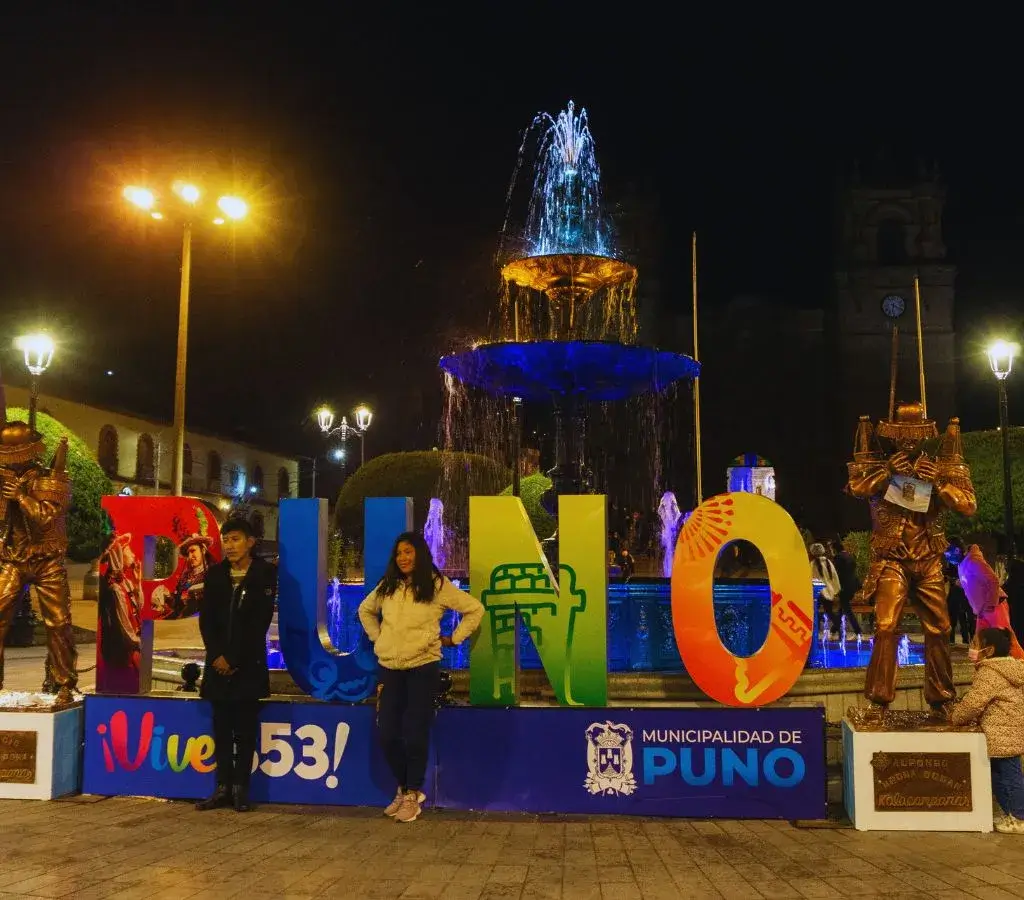
The origins of the Virgin of Candelaria date back to 1392 on the Spanish island of Tenerife in the Atlantic Ocean. It was a mandatory stop for Spanish voyages to the Americas, which is why the image became ingrained in colonial territories.
The devotion in Puno, Peru, began in 1781 when the region was under siege by Túpac Katari's forces. The locals, fearing what might happen, paraded the Virgin with Sikuris (panpipe players). The procession was so massive and noisy that it caused confusion and fear among the invaders, leading them to retreat.
There are three versions of what happened: the first says the invaders mistook the procession for an army; the second claims the occupiers believed the crowd consisted of mounted soldiers; the third suggests they retreated out of respect for the Virgin. All three versions attribute the miracle to the Virgin, who was named their patron saint.

The foundation of the Village of Our Lady of Conception and Saint Charles dates back to September 9, 1668, when the residents were ordered to relocate to a village after the order to destroy the town of San Luis.
The village was named the Village of Our Lady of Conception and Saint Charles due to the devotion of the Viceroy Conde de Lemos, and the village was consecrated by Saint Charles Borromeo.
This is why Puno has roots with San Juan, while the village is dedicated to Our Lady of Conception and Saint Charles.
The Sanctuary of the Virgin of Candelaria is located in the Temple of San Juan. In 1988, Monsignor Jesus Mateo designated it as a sanctuary where the Virgin is celebrated and venerated every year.
The festival begins on January 28 and runs through February 18, with the central day being February 2, when a mass, procession, and competition of native dances like ayarachis and wifalas are held at the Torres Belón stadium. The competition of light costumes, such as the diablada, morenada, and caporales, takes place eight days later, along with a mass and a procession of the Virgin.
During the Feast of the Virgin of Candelaria, it's customary to eat, drink, and decorate everything in sight. No expense is spared, as according to tradition, this symbolizes giving and receiving, with everything serving as an offering in gratitude for the Virgin's miracles.
The dances presented throughout the festival weeks are divided into two types: native dances and light dances.
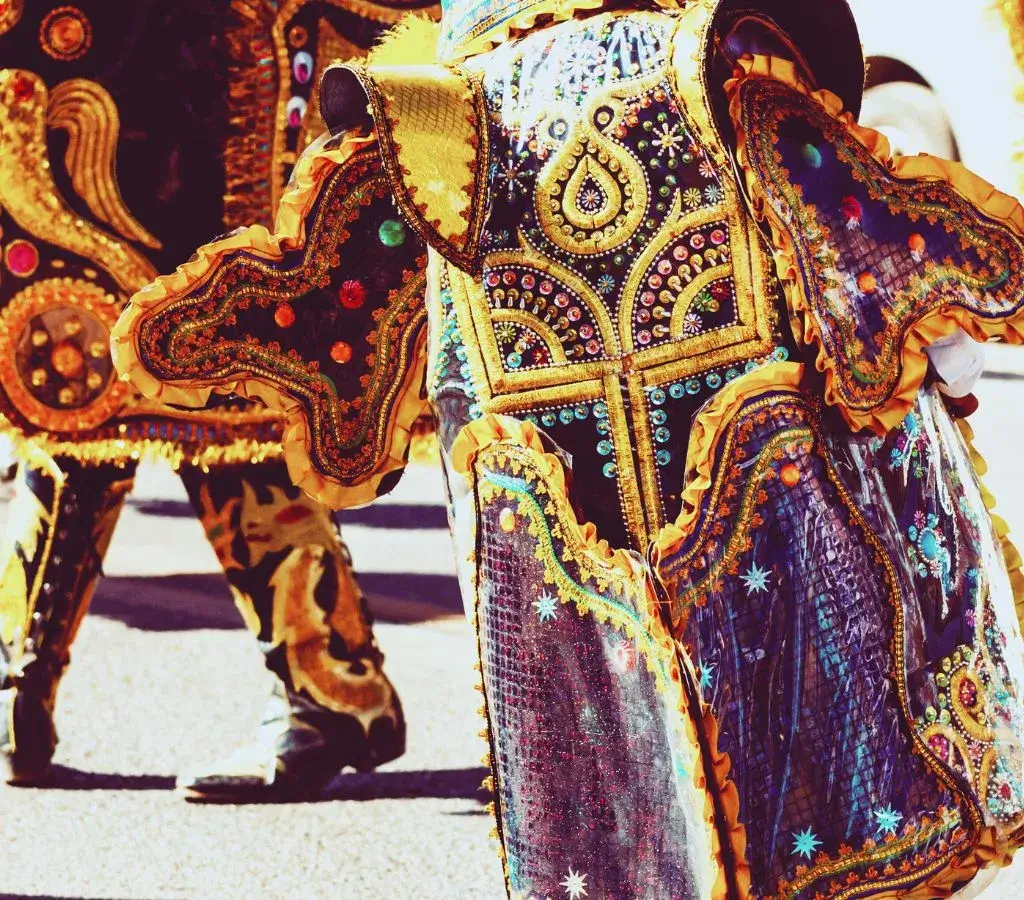
These dances are characterized by their traditional nature, without changes in costumes, instruments, or materials used. Here are some examples:
These are called mestizo dances, allowing variations and innovations in costumes, choreography, and music. That's why these dances are not repetitive.
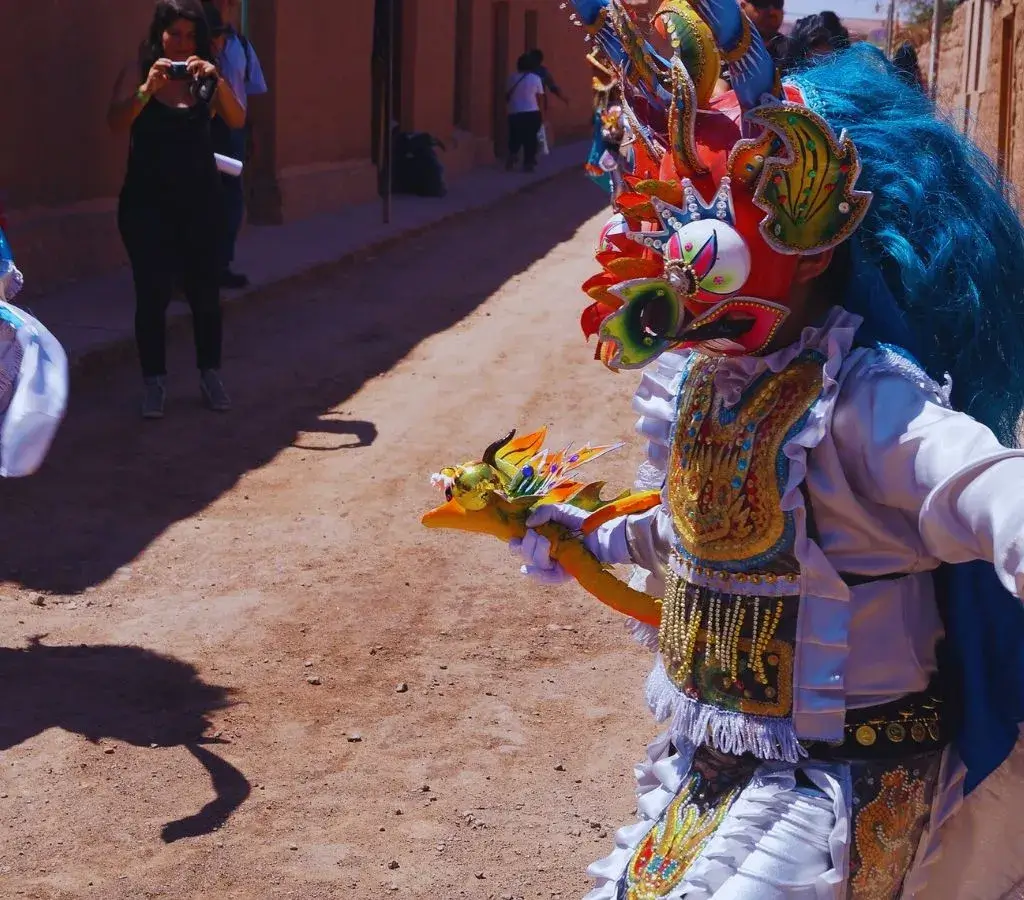
The Feast of the Virgin of Candelaria is celebrated from January 28 to February 18. The central day involves a mass, street parade, and procession, along with the Octave, Veneration, and Cacharpari.
Regarding clothing restrictions, native dances represent the origin and traditions, so their costumes, music, and materials cannot be changed or innovated.
In terms of festival restrictions, using animals like horses, mules, and donkeys is prohibited to prevent animal cruelty. Also, no parties are allowed near the neighborhoods where the festival takes place, to maintain peace and quiet. Additionally, the sale of alcoholic beverages around the festival area is prohibited to avoid disturbances during the weeks of the celebration.
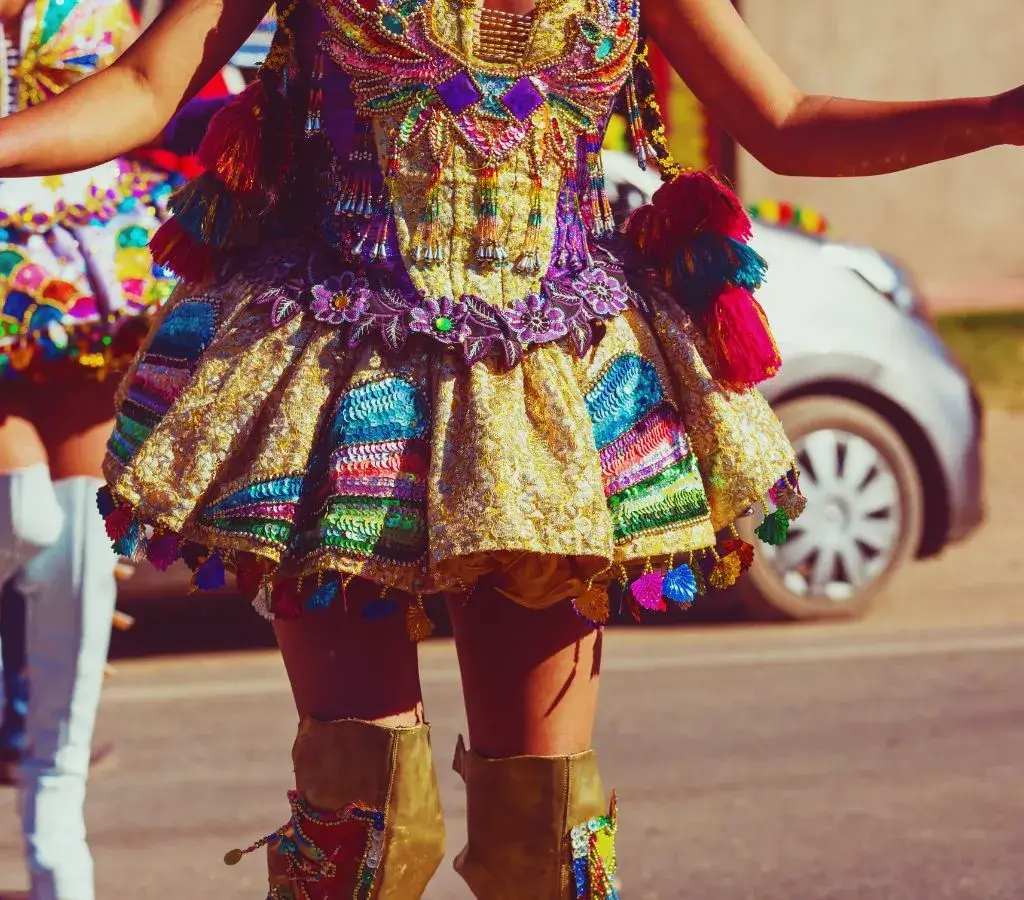
The Corpus Christi in Cusco is a Catholic-Inca religious celebration of the Body of Christ. This festival takes place annually with devotion, music, dance, and native cuisine of Cusco. It does not have a fixed date and depends on the date of Easter Week.
Corpus Christi is a cultural religious festival meaning "Body of Christ". It is a celebration that blends Catholic traditions with the practices and beliefs of the Andean peoples, demonstrating the devotion of the faithful.
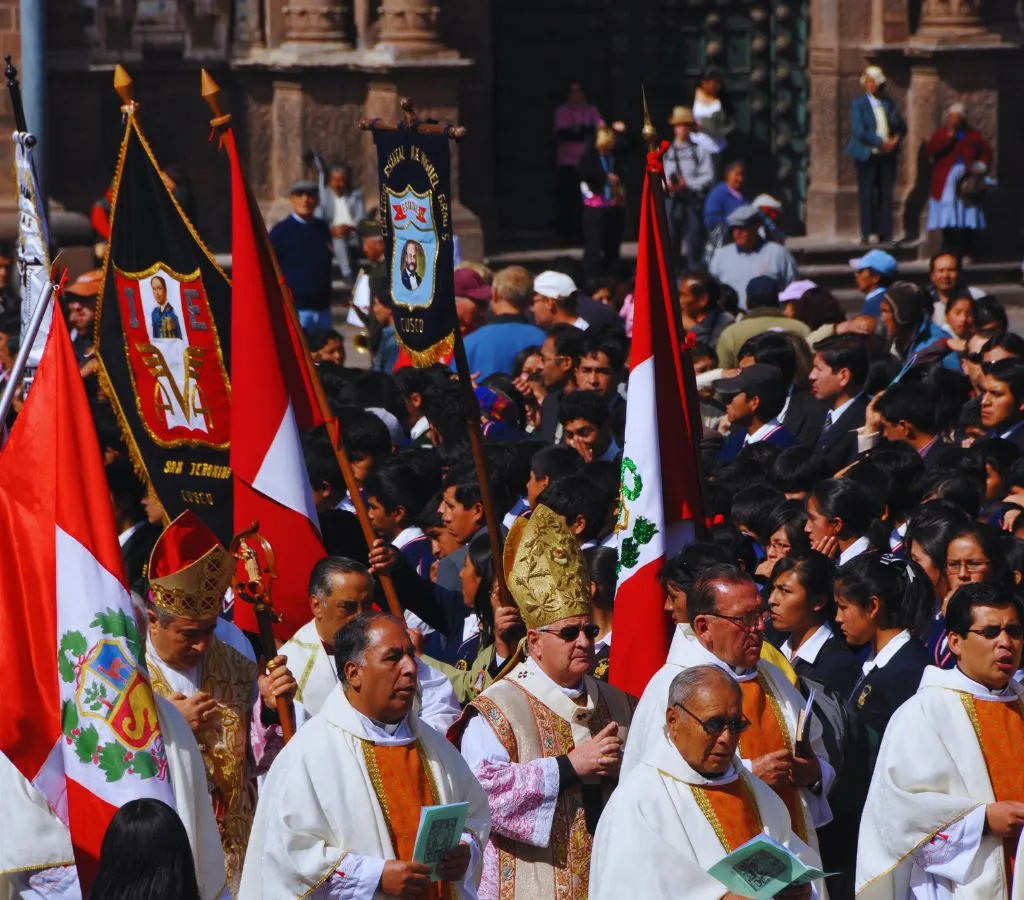
Corpus Christi is celebrated annually 9 weeks after Holy Thursday (Easter Week) and features 15 saints who leave their church or temple from various parts of Cusco in a procession accompanied by music, dances, and regional cuisine, heading together with their devotees to the Main Square of Cusco.
Corpus Christi is a Catholic religious activity honoring the presence of Christ in the Holy Eucharist. This festival gains significant relevance in Cusco's culture as a celebration to honor the Inti (Sun).
The Cusco Corpus Christi began in the Inca era, with festivals dedicated to ancestors and gods such as Tayta Inti, the goddess Killa, Kuychi, etc., where the mummies of high sovereigns were paraded. Later, with the arrival of the Spaniards and evangelization, it was decided to replace the procession of mummies with the procession of 15 saints.
Corpus Christi is celebrated worldwide in the Catholic religion; however, the Cusco Corpus Christi is a unique cultural celebration of the body and blood of Christ.
Corpus Christi involves significant organization by the Mayordomos or Carguyoc, who are chosen each year and are responsible for funding each of their Saints.

The celebration includes several stages, the first taking place with the departure of the 15 saints from their respective churches or temples to the Cathedral of Cusco:
Each Saint's destination is the Santa Clara Arch, then to the Church of San Pedro, where the symbolic handover of the cathedral keys from San Pedro to San Antonio takes place, followed by a mass. Then, all other saints start a procession towards the Cathedral where they remain for a week.
The octave is the date 8 days after Corpus Christi when the procession of the 15 saints around the Main Square takes place. It commonly starts in the afternoon after lunch.
The descent of the Saints is the day after the octave, consisting of the return of the Saints to their respective churches or temples with the appropriate protocol for each saint, showcasing their culture.
Corpus Christi is characterized by its rich cuisine, which is another major attraction of this festival. The dishes served during this time include:
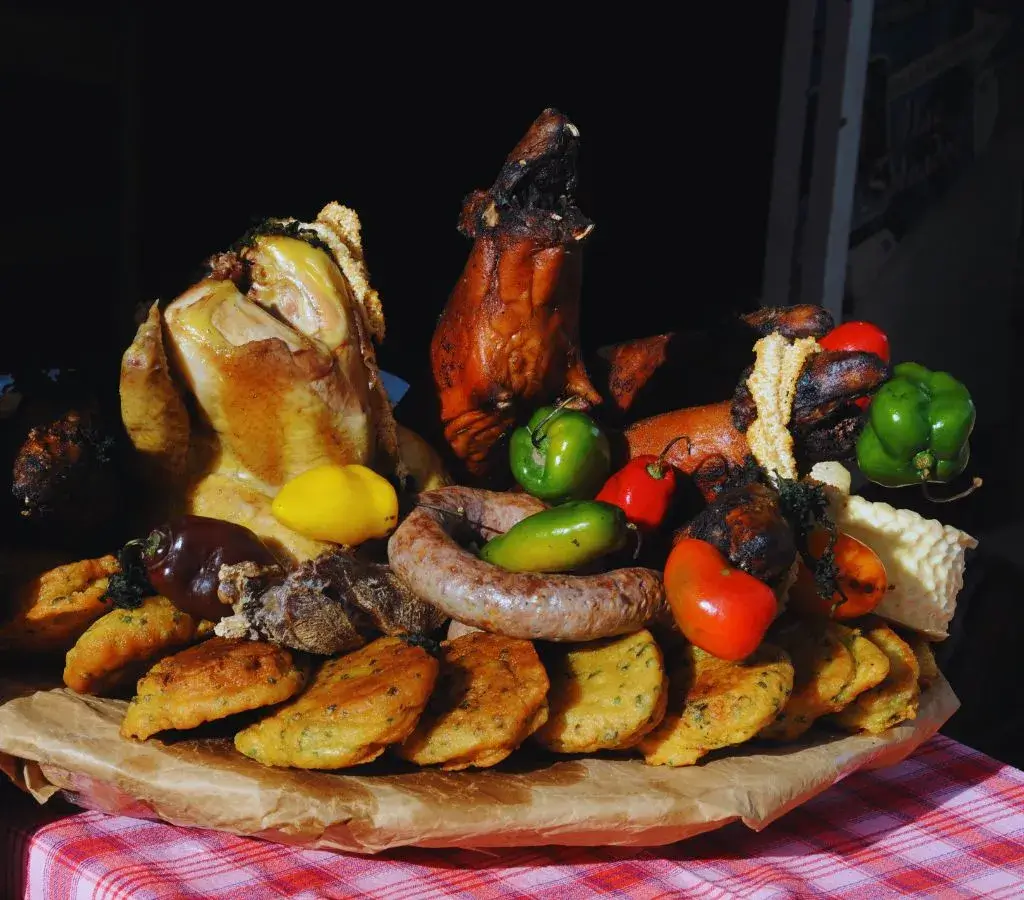
Chiri Uchu is the emblematic dish of the Corpus Christi festival, which means Chiri = cold and Uchu = chili. This dish dates back to the Inca and colonial era and represents the duality of the Inca culture, being served cold as an offering to the sun, which represents heat.
Its ingredients include boiled chicken, oven-roasted guinea pig, dried meat or chalona, flour pancakes, toasted corn, blood sausage, chorizo, cheese, seaweed or cochayuyo, fish roe, and chili to taste, all served cold and ready to enjoy.
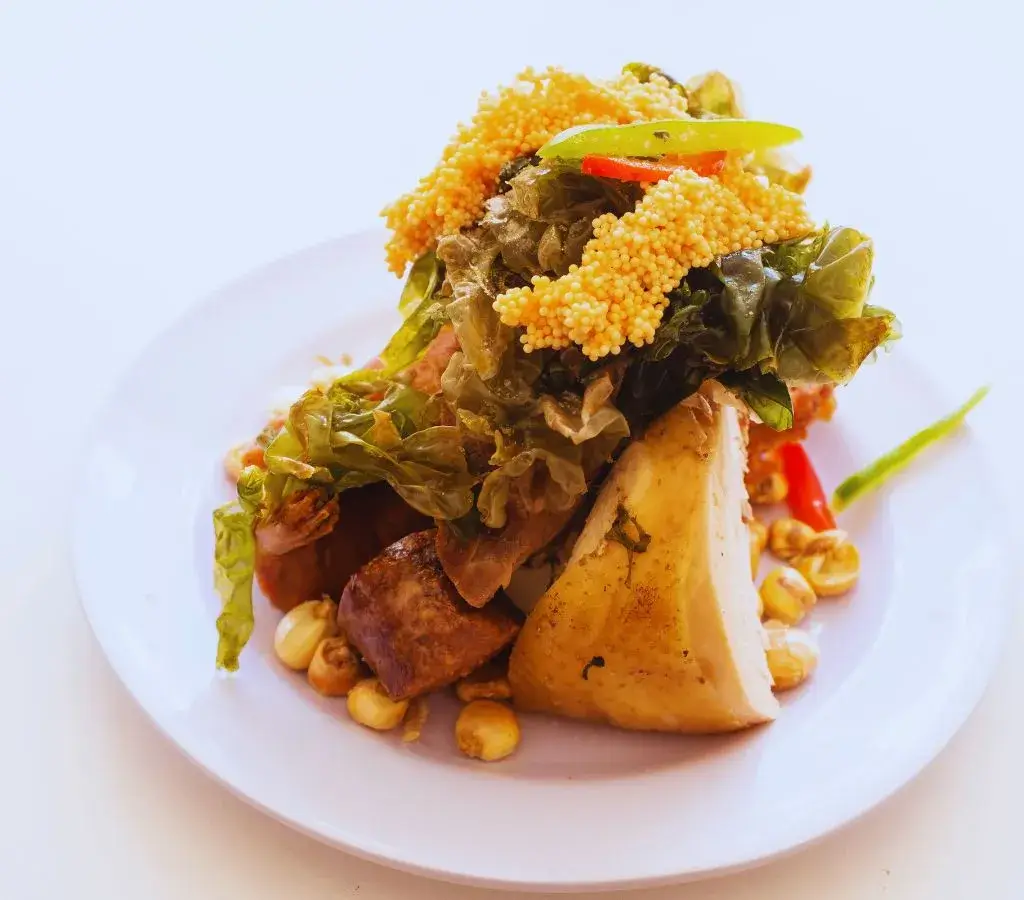
Cuy Chactado is another highly consumed dish in this significant Cusco festival. It involves boiling a guinea pig and then seasoning it with local spices before final baking in an oven.
It can be served with rice, potatoes, salad, fried yucca, and a typical drink from Cusco.

Chactado
The Cusco fried trout is prepared using either river or sea trout. This typical dish is served fried alongside rice, yucca, and optionally with a criolla sauce.
This dish can be found at any time in the country restaurants of the city.
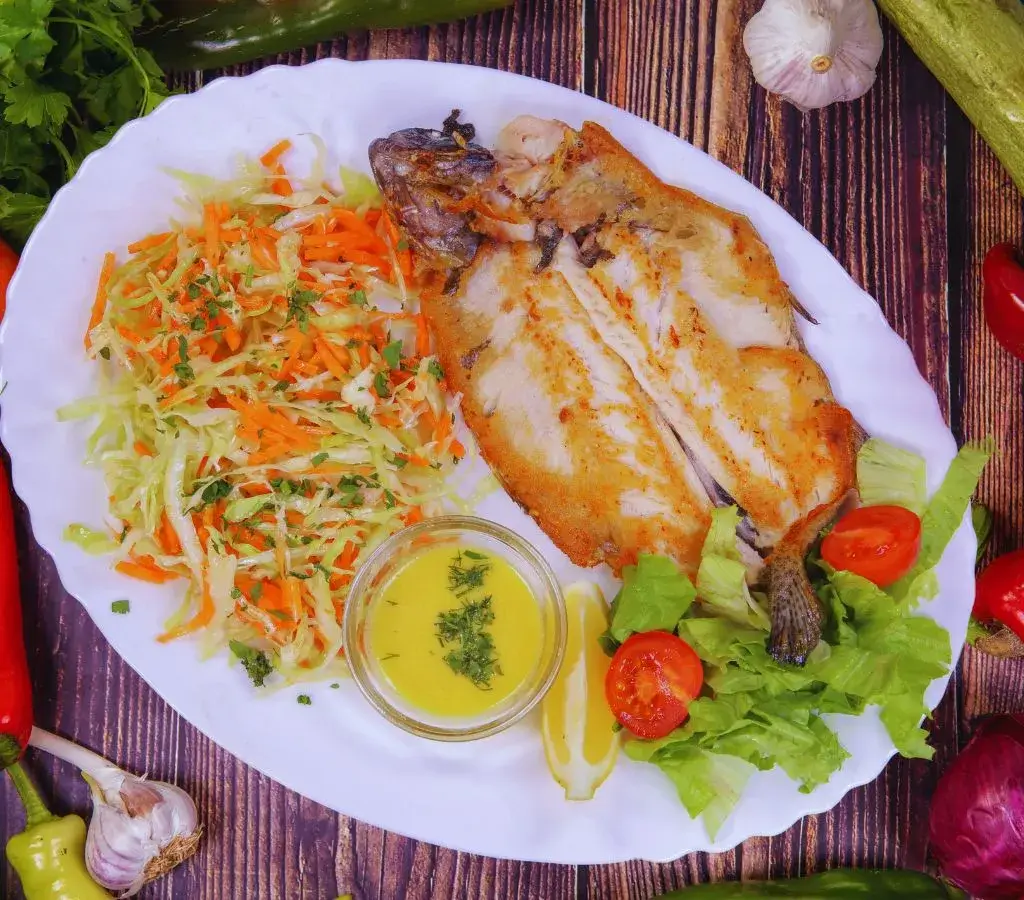
The stuffed rocoto is another typical dish of this festival, made from a round-shaped spicy rocoto pepper. It is prepared by removing the veins and seeds and then stuffed with beef, peanuts, chopped onion, and cooked in a pan.
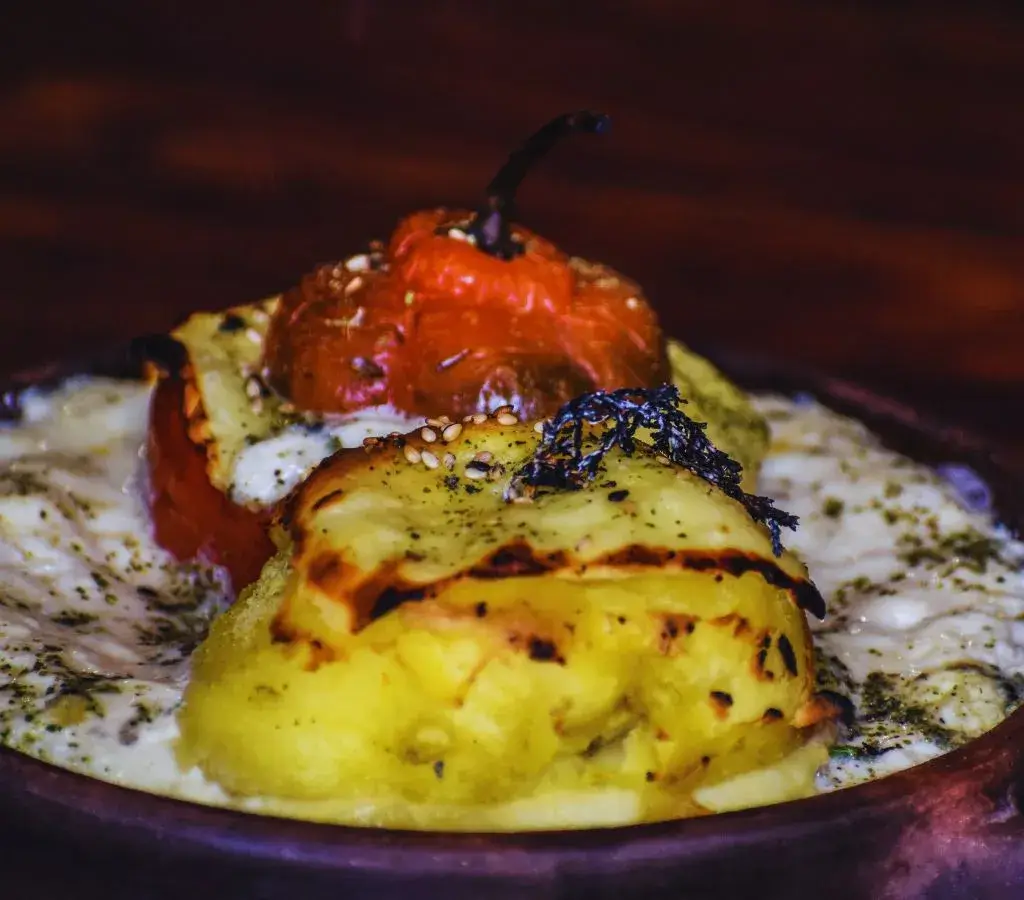
Quinoa soup is one of the many varieties of soups prepared in Cusco.
This soup is favored by visitors for its nutritional value, pleasant taste, lightness, and is mostly consumed in cold seasons.
It is recommended for those acclimatizing to avoid altitude sickness and also because it is not heavy on the stomach.
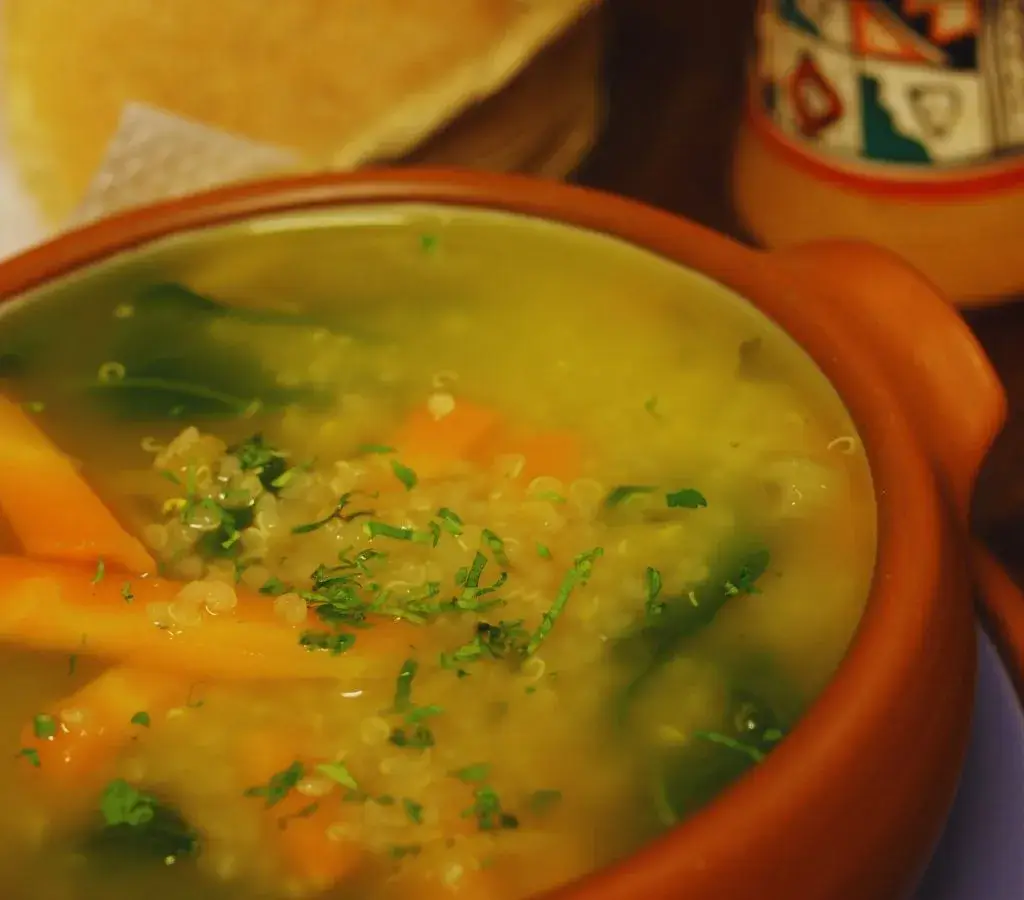
In Cusco, there is a wide variety of fruits that grow in its different provinces according to their climate. During this season, it is common to consume cherimoya, coconut, and sugarcane, which are available throughout the duration of the festival.
```
The festivity of the Virgin of Carmen is celebrated in different parts of Peru and the world; it is a colorful celebration full of culture, celebrated every year on July 16th.
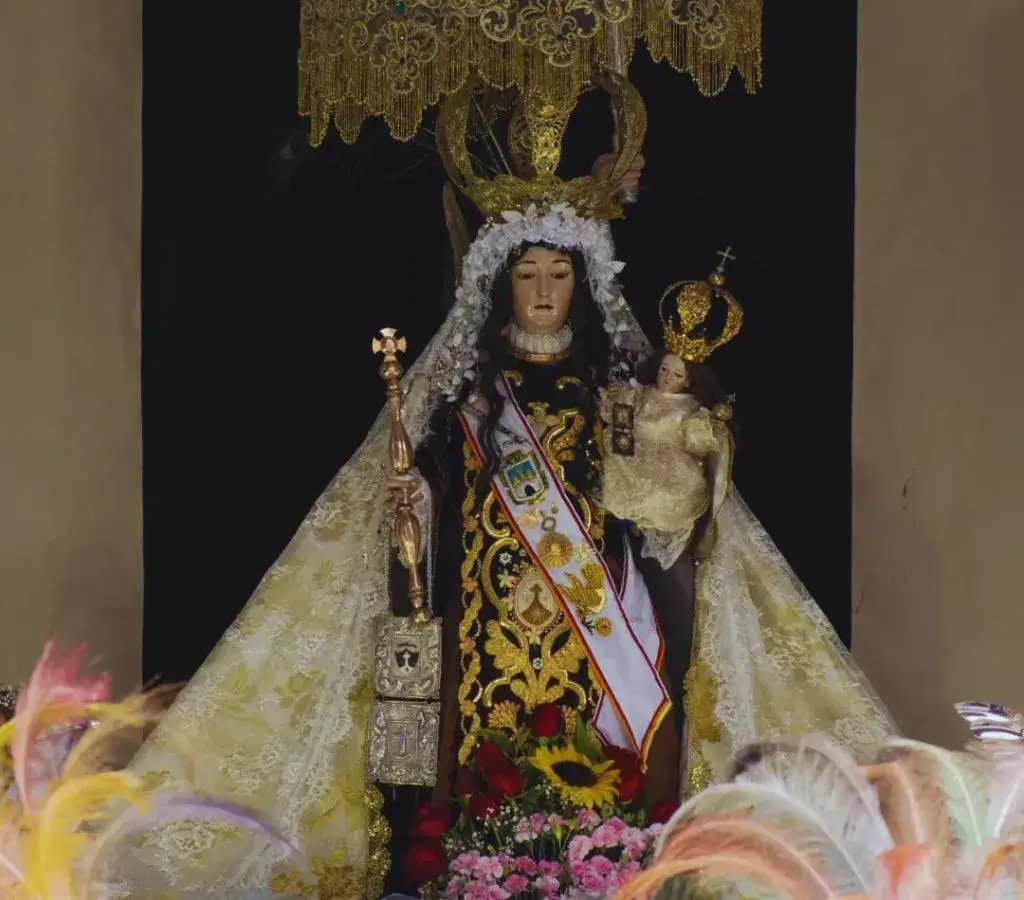
The history of the Virgin of Carmen consists of the first book of Kings in the Bible (18:19), where the prophet Elijah lived in a cave on Mount Carmel in Israel. Elijah went up to pray for the drought that affected his population, who, out of gratitude, stopped venerating the god Baal.
Over time, a special meaning was given to the mountain where people went to pray, and it was there that the Order of Carmelites or Order of Our Lady of Mount Carmel arose, the main antecedent of devotion to the Virgin of Carmen.
On July 16, 1251, the sixth Superior General of the Order, named San Simon Stock, witnessed the apparition of the Virgin of Carmen, who gave him a scapular that granted the opportunity to go to heaven upon death. This is how homage to the Virgin of Carmen began. The Carmelite friars abandoned the place because of the Islamic invasion, spreading the order to the kingdoms of Spain.
The festivity of the Virgin of Carmen takes place in different parts of the world such as Spain, Latin America, and in different departments of Peru, Lima, Ancash, Lima, Callao, and Cusco.
In Cusco, the main celebration takes place in the province of Paucartambo, located southeast of the Andes, 4 hours from Cusco. The central day is July 16th; however, the festival extends from July 15th to 18th.
The feast of the Virgin of Carmen has its main date on July 16th; however, in the Paucartambo festivity, it is celebrated every year for 4 days.
On July 15th, the festivities begin with the "entry" of the troupes. The Maqtas enter on a fire truck, the Qhapaq Qolla from the Qollao region, the Qapaq Ch'uncho enter from the north, the Majeños enter on horseback, and the Chukchus make their entrance on a truck. All this activity represents reverence and fervor.
On July 16th, the central date of the Virgin of Carmen, begins with a dawn mass at the start of the day, followed by the festival mass accompanied by music and dances. After the ceremony, the troupes dance through the streets and squares, where everyone gathers and drops fruits and small objects from the balcony of the municipal library.
It is believed that this day is a day of omens; if the virgin appears rosy, it will be a sign of vitality, and if the virgin shows her pale face, it will be a sign of sorrow.
On July 17th, homage is paid to the carguyoc and members of the troupes who have passed away. In the afternoon, the virgin leaves while visitors and residents await the blessing at the Carlos III bridge.
On July 18th, is the final day; crowds gather to receive blessings, and the troupes bid farewell to the virgin until the next year, safeguarding the virgin in her temple.
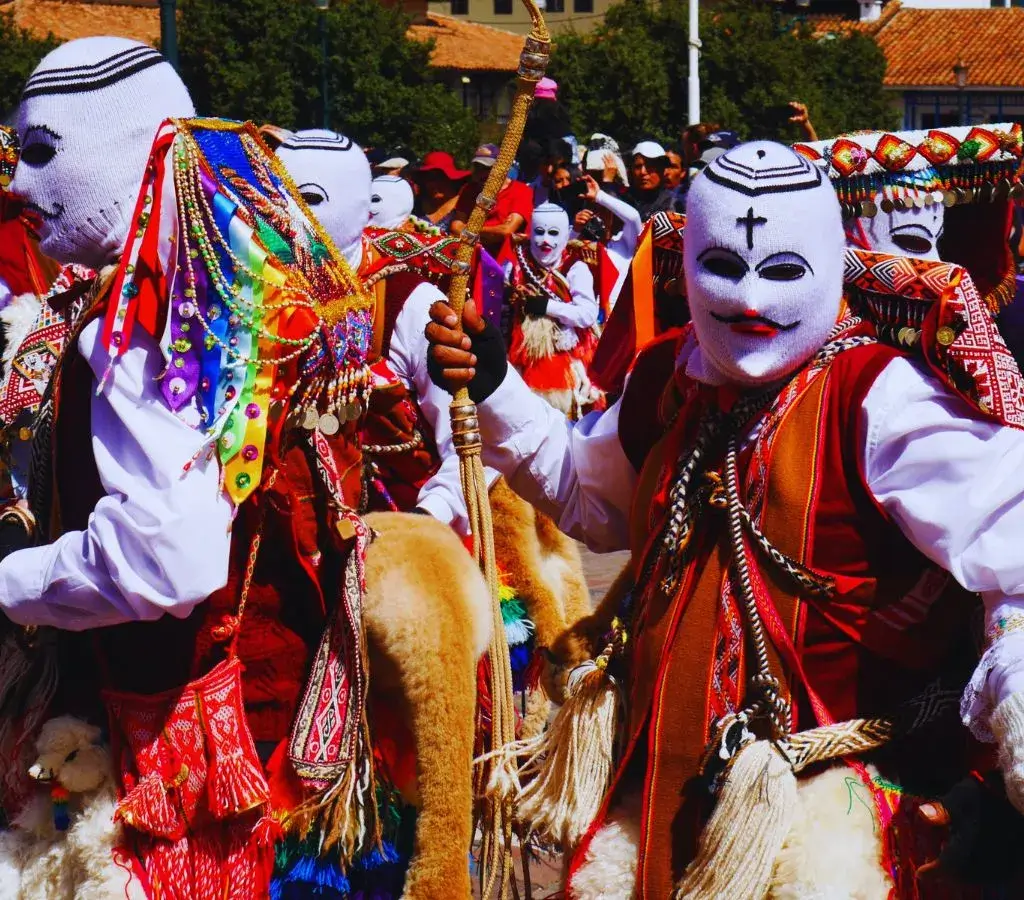
The dances are one of the most important attractions of the festival, with a large list of troupes made up of faithful devotees who dance and celebrate in honor of the virgin.
Danzaq is a dance that represents seductive men of young ladies, conquerors of committed women, and consolers of widowed women. Among its characteristics are its size, sensuality, and posture. They carry a stick in their right hand, their garments are colorful, and they wear the image of the virgin on their chest.
Chunchachas is a dance characterized by being composed of young women who represent the warrior jungle woman; it is a young dance that visits the Virgin from the Kosñipata valley.
This dance represents slaves brought from the coast of Bolivia and Peru; in its staging and melodies, they demonstrate their suffering before the Virgin of Carmen. The music is entrusted to people who master the violin, accordion, quena, harp, and drum. It is made up of the caporal or black king, soldiers with their captains, and children who will be captains in the future.
The Qhapaq Ch'uncho dance represents the warriors of the Kosñipata jungle when they enter the festivity, carrying fruits, parrots, huayruros, and other local products used for exchanges. This troupe plays the role of guardians and is composed of the Chuncho king, followed by 2 rows of dance members, and along with them, the monkey who enlivens the dance with its performance.
The Inti Raymi, or Festival of the Sun, is an ancestral Inca celebration held on June 24th in Cusco, Peru. This event honors the god Inti and strengthens the spiritual and cultural connection of the Andean peoples. It is one of the most important celebrations in the region.
Inti Raymi is one of the most important celebrations of the Inca era, which is still alive today. It takes place on June 24th in Sacsayhuamán, with rituals, dances, and ceremonies in honor of the sun god. This festival combines religious and cultural elements of the Inca civilization, reflecting the spiritual and cultural wealth of the Andean people.
Inti Raymi originates in the Inca Empire, where worship was dedicated to the sun god, Inti. Despite the Spanish prohibition, it emerged as a symbol of the Andean cultural renaissance, showing the resistance of indigenous traditions in Peru.
Inti Raymi has its roots in Inca culture, reflecting the beliefs and traditions of this Andean civilization. It is celebrated during the winter solstice, with rituals of gratitude to the sun and prayers for protection in agricultural cycles. The Inca, his court, and priests participated in ceremonies that included offerings, dances, and music.
One of the most significant moments was the worship of the sun, the source of life and energy. This festival was an event that strengthened the power of the Inca, although it was banned by the Spanish, Inti Raymi remains a symbol of Andean identity and culture.
With the arrival of the Spanish and the imposition of Christianity, this celebration was banned due to its pagan nature. Despite the repression, the traditions of the festival remained alive in the collective memory of the Andean people, transmitted in secret.
In the 20th century, during the resurgence of indigenous cultural identity, the tradition was revived in the 1940s when intellectuals and indigenous leaders worked to recover this festival, leading to its reinstatement and spread in Cusco.
The sun, represented by the deity Inti, was fundamental to the Incas, being considered the source of life and sustenance for all forms of existence. In Inti Raymi, the sun symbolizes fertility, abundance, and the cycles of nature. This festival is an act of veneration towards Inti and a spiritual renewal with the earth and the cosmos.
Inti Raymi is a key festival in the Andean worldview, which sees nature, humans, and gods as interconnected. This celebration represents a moment of harmony and reciprocity between humanity and the universe. It is an opportunity to renew respect and gratitude towards nature and divine forces.
Dedicated to the sun god, although it was suppressed during Spanish colonization, it has resurged with strength and is now celebrated in Cusco (Peru), particularly at the Archaeological Center of Sacsayhuamán, the cradle of civilization.
It is one of the most important festivals in Peru, attracting thousands of visitors each year. This year, 2025, promises to be unique, with ancestral ceremonies, theatrical representations, folk dances, and traditional cuisine. Organizers have prepared a special program for the occasion.
The festival is held every June 24th, during the winter solstice in the Southern Hemisphere, and lasts several days, from June 21st to June 24th. During this time, various activities take place in Cusco and its surroundings, allowing visitors to experience Andean culture and enjoy the celebration.
The staging of Inti Raymi takes place in 3 venues in the city of Cusco.
Qorikancha, or Temple of the Sun, is a key location for Inti Raymi in Cusco. This archaeological site, dedicated to solar worship in the Inca Empire, still bears traces of its splendor. During Inti Raymi, ceremonies are held in honor of the sun, beginning at Qorikancha on June 24th in the early hours of the day.
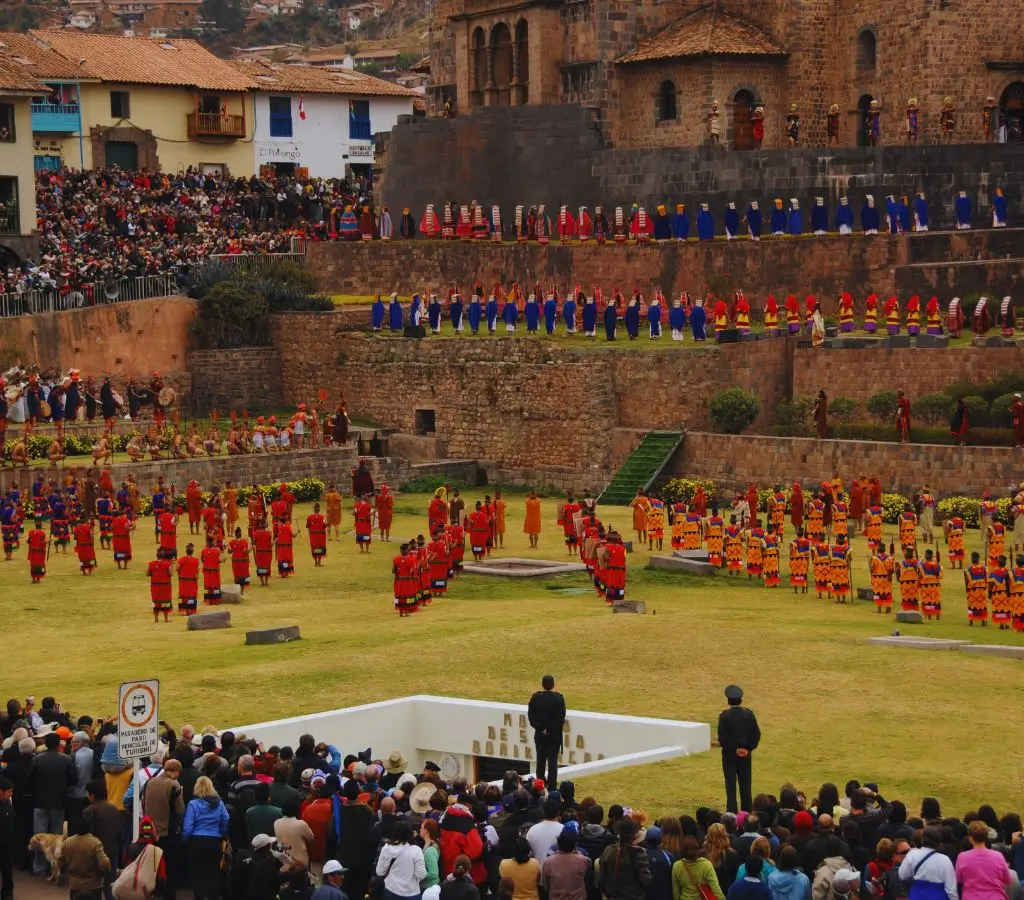
The Plaza de Armas of Cusco is another key location for this tradition, where the mayor participates in the celebration. During the festival, there are parades, theatrical representations, and folk dances, showcasing the spirit of Inti Raymi. This square attracts both tourists and locals, making it a prominent gathering spot.

The Sacsayhuamán Fortress, on the outskirts of Cusco, is the main venue for Inti Raymi. With its massive stone walls, it serves as the backdrop for ceremonies and rituals. After the performances at Qorikancha and Plaza de Armas, visitors can witness the recreation of ancient Inca rituals, such as the offering to the sun and the worship ceremony.
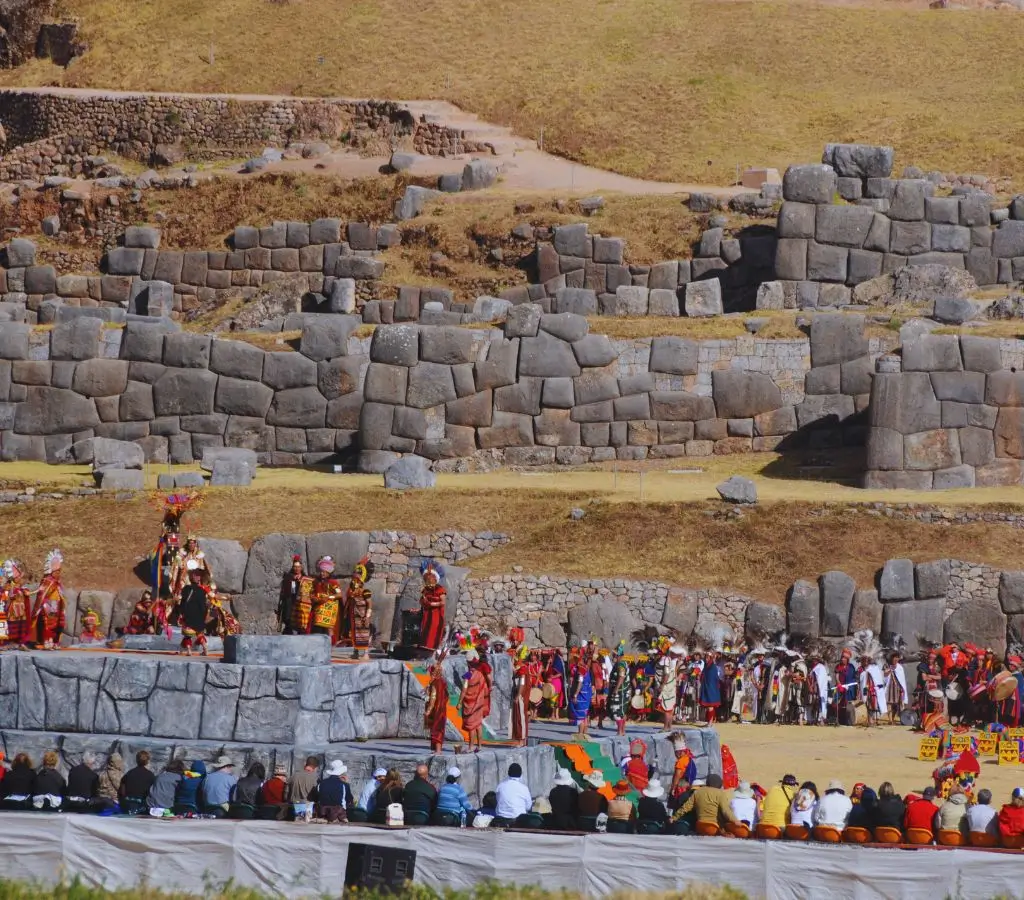
The Inti Raymi program offers various cultural activities to celebrate Andean heritage, including theatrical performances at Qorikancha, folk parades at the Plaza de Armas, and the main ceremony at Sacsayhuamán, with the participation of the mayor of Cusco. There are also art exhibitions, craft fairs, and traditional food tastings for visitors.
Let’s detail some of the key characters that participate during Inti Raymi:
During the celebration of Inti Raymi, the Inca and the Coya play prominent roles as representatives of the Inca royalty.
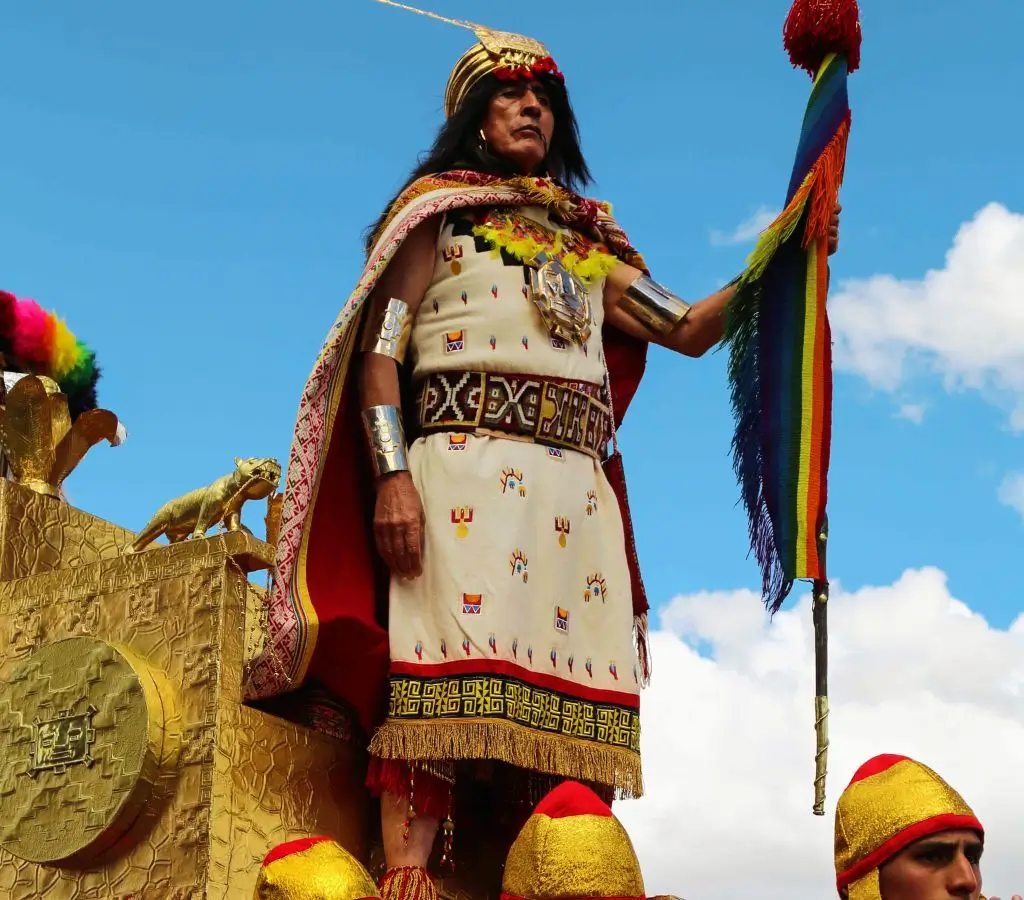
The Inca, as the leader, leads the ceremonies in honor of the sun, accompanied by the Coya (his wife). Together, they symbolize the union between the people and their rulers, reflecting the sacred relationship between humanity and the cosmos.
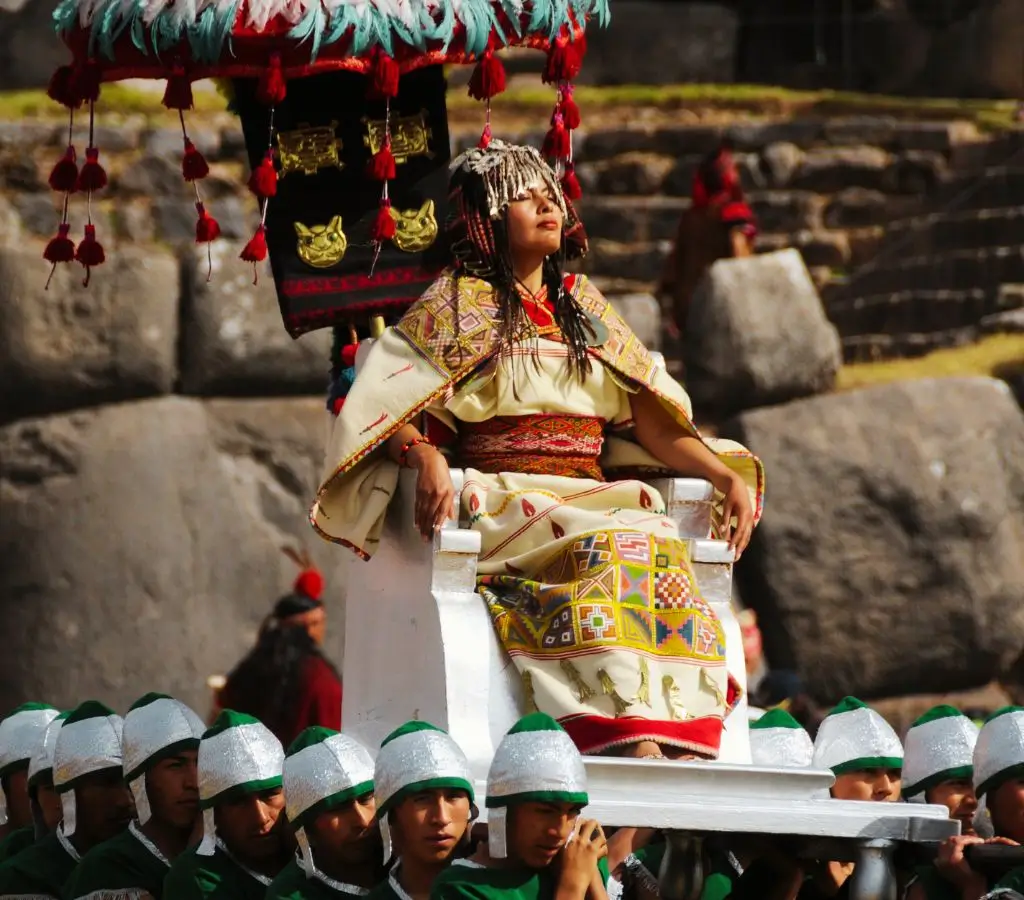
The ancient dances and rituals are fundamental to Inti Raymi, as they reflect the arts and spirituality of the Andean people. Each dance has a deep symbolic meaning, based on millenary traditions. With their movements, the dancers pay tribute to the gods, celebrate nature, and showcase the cultural identity of their communities.
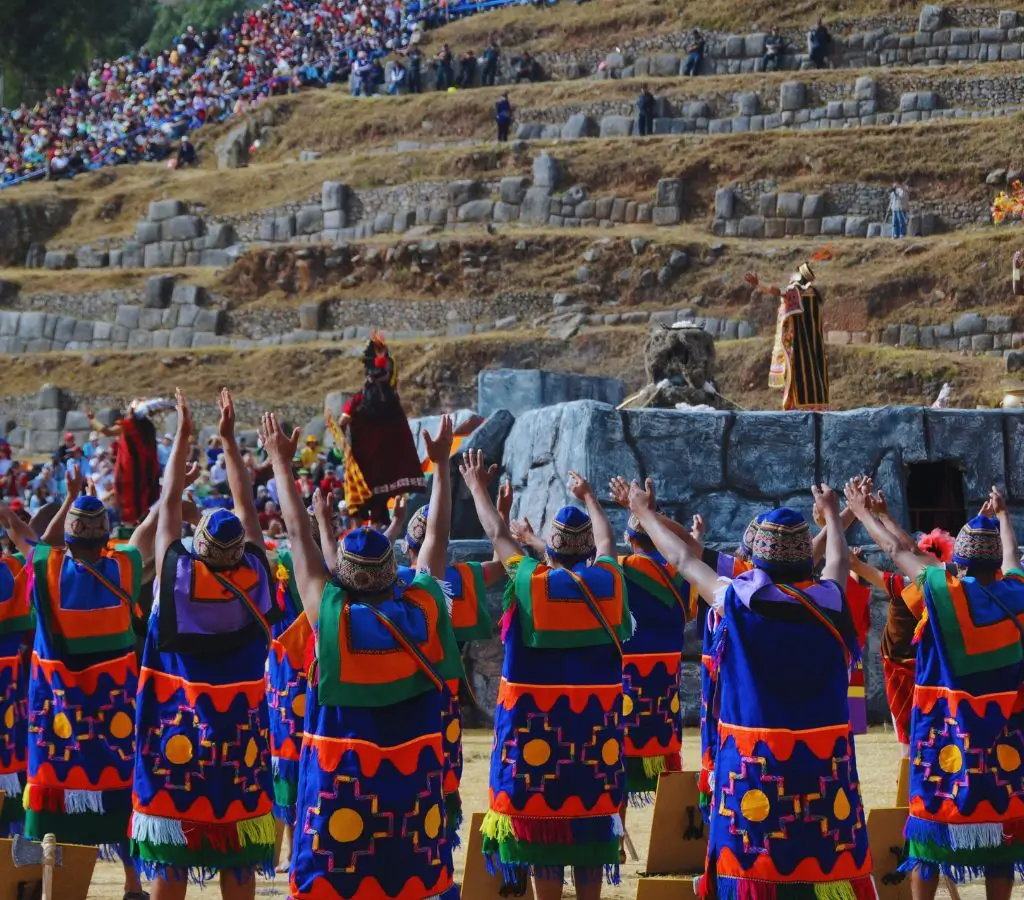
Women play a key role in Inti Raymi, actively participating in the ceremonies and dances while preserving cultural traditions. During the festival, they wear colorful outfits representing the diversity of the Andean region; many women also take on important roles as priestesses, shamans, and community leaders, strengthening and transmitting Andean culture.
This celebration dedicated to the sun, a deity in the Inca worldview, is held on June 24 in Sacsayhuamán, with rituals of thanksgiving for the harvest and the arrival of the new solar cycle. It is a renewed manifestation of the rich cultural and spiritual heritage of the Peruvian people.
Inti Raymi is primarily celebrated in the city of Cusco, specifically in Sacsayhuamán, an important cultural center today.
Inti Raymi is celebrated every year on June 24, coinciding with the winter solstice in the Southern Hemisphere. The festivities begin days before, with a series of pre-events leading up to the main ceremony on the designated day.
The schedule varies each year, but generally includes religious ceremonies, theatrical performances, parades, gastronomy, and cultural events in Cusco. The details of the program are announced in advance by the authorities.
Tickets for this event can be purchased online or at authorized sales points in Cusco and nearby areas. Due to high demand, it is recommended to buy them in advance to secure access to the festival. Inti Raymi Tickets
Many visitors prefer to attend Inti Raymi with travel agencies that offer packages including transportation, accommodation, guides, and tickets. These agencies simplify travel planning and ensure a smooth experience.
If you have any questions, you can find the answers here:
Inti Raymi lasts approximately one and a half to two hours.
Inti Raymi is a crucial festival for rural communities, showcasing their connection to ancient traditions and celebrating nature and the cosmos.
Inti Raymi is celebrated every year on June 24 in the city of Cusco, with the main event held at the archaeological site of Sacsayhuamán.
Yes, taking photos and videos is generally allowed during Inti Raymi, as visitors enjoy the opportunity to capture special moments of the festival. However, it is important to follow the restrictions and rules set by the local authorities, as these are in place to ensure respect for traditions and the proper development of the activities.
We currently offer special packages designed specifically for experiencing this unique event. These packages include everything necessary to fully enjoy the celebration, such as comfortable accommodations, safe transportation, expert tour guides, and tickets to the main archaeological sites of Cusco.
Come to Cusco and don't miss the chance to learn more about this festival. Contact us at +51 944 714 563 or by email at info@illapa.com, and let us take you on this vibrant adventure.


